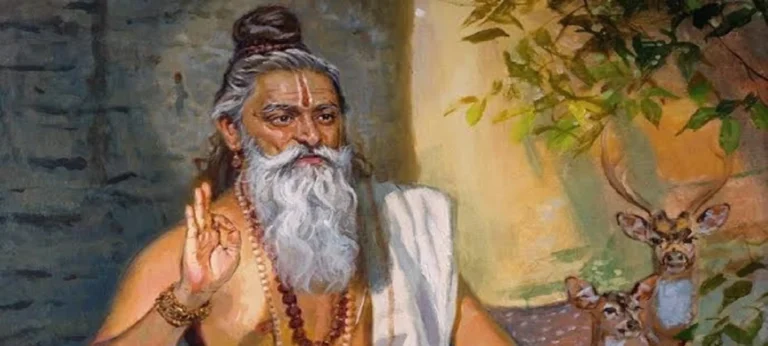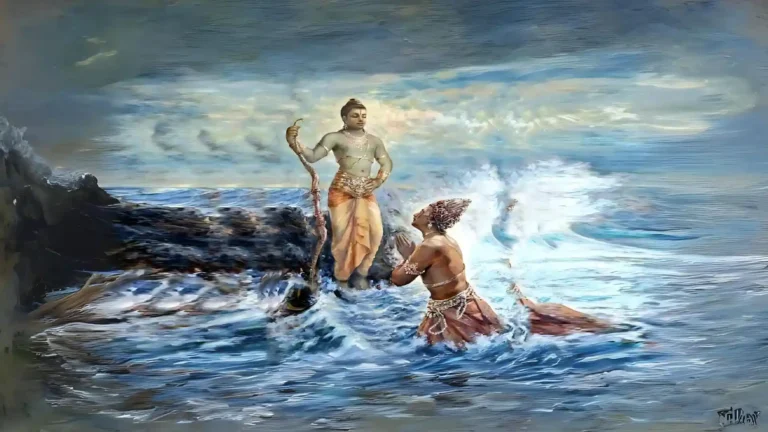Please Like the Blog and Share it for Maximum Reach
Table of Contents
How can we learn from the Bhagavatham?
By reading, hearing, and contemplating the questions posed by Parikshit Maharaja we can gain enormous insight. In material education, one usually manipulates the facts as one lacks sufficient knowledge about the subjects.
However, the spiritual wisdom of a seeker cannot prosper without clearing his/her doubts. If one fails to ask concerning questions from a bonafide master, we one continue treading on the wrong path. Also, we unconsciously adopt incorrect practices that might lead to confusion.
Therefore, we must try to implement and relate to the conversation that took place between the elevated beings, Sukadeva and Parikshit. It answers both basic questions about material living and questions with reference to spirituality. All questions that may arise in our mind have are already been answered in the Bhagavatham.
Therefore if we attentively invest our time in this pursuit we will find personal answers to our questions!
Why the mind is not able to focus for long hours?

Therefore, Sukadeva first explains Dharana, Dhyana, and Samadhi or ‘different stages of meditation’ to Parikshit. The latter tried to focus, but the mind would drift away after some moments. This is a very common experience for many of us.
One is not able to retain his concentration levels with the same effectiveness as he did in the beginning. Neither concentrating on small stuff like stone, water, etc can persist for long nor on huge celestial bodies like planets, stars, and constellations.
The former object of concentration has no benefit while the latter due to its vastness leads to mind wandering. Hence, our object of focus should be perceivable and at the same time, we should be able to concentrate for long hours.
Parikshit found these characteristics missing in his objects of concentration and was left disappointed.
2 types of Meditation explained by Sukadeva
- Formless meditation: Meditating on the huge formless aspect of God
- Form meditation: Meditating on the characteristic features and beauty of Bhagawan.
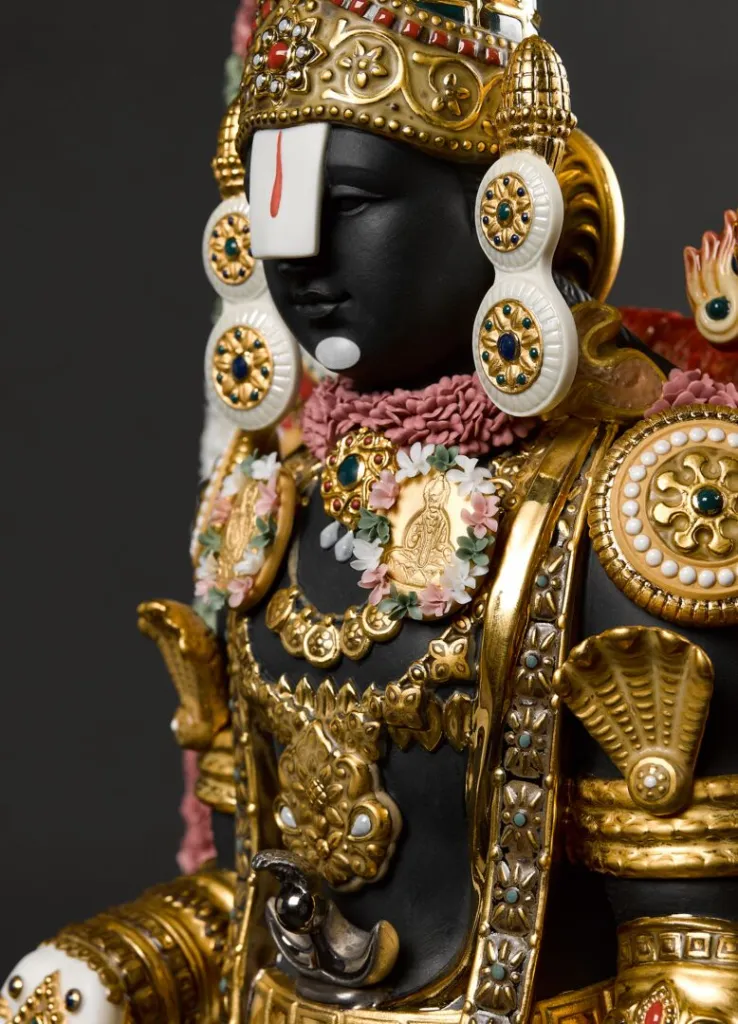
Form and Formless Aspect of God forms the very basis of Indian Spirituality. Sukadeva explained two modes of meditation: “Parikshit, the formless Brahman governs this entire world. He is the master of the 14 worlds and therefore you should meditate on the vastness of that Brahman.”
But, Parikshit’s mind wandered when left to concentrate on the 14 worlds and the magnanimity of that supreme governor, Brahman. The mind does not have the power to capture such a huge, unperceivable God and therefore, dejected Parikshit approached Sukadeva and reported his failure.
In turn, Sukadeva suggested: “Now, you must meditate on the form of Bhagawan who is the Supreme Master. He is omnipotent and is ever splendorous. Go and meditate on your Ishta.”
Following the instructions of his Guru, Parikshit meditated and succeeded in his endeavor. Sukadeva explained: “The formless aspect of the Lord is not perceivable but is all-powerful or the Energy aspect of Bhagawan. But, meditating on the divine form of the Lord who is your Ishta or (favorite deity) is the highest form of meditation.
Because the mind engages in praying to Him and adoring His beauty.
Bhagawan, irrespective of His deity size, form, place of origin, He is the master of all energies governing the universe. He is energetic. Not only does He possess qualities housed in the formless aspect (Virat) but additionally has a Divine form.
Therefore, meditating on His form is the highest form of meditation.
Benefits of Form Meditation
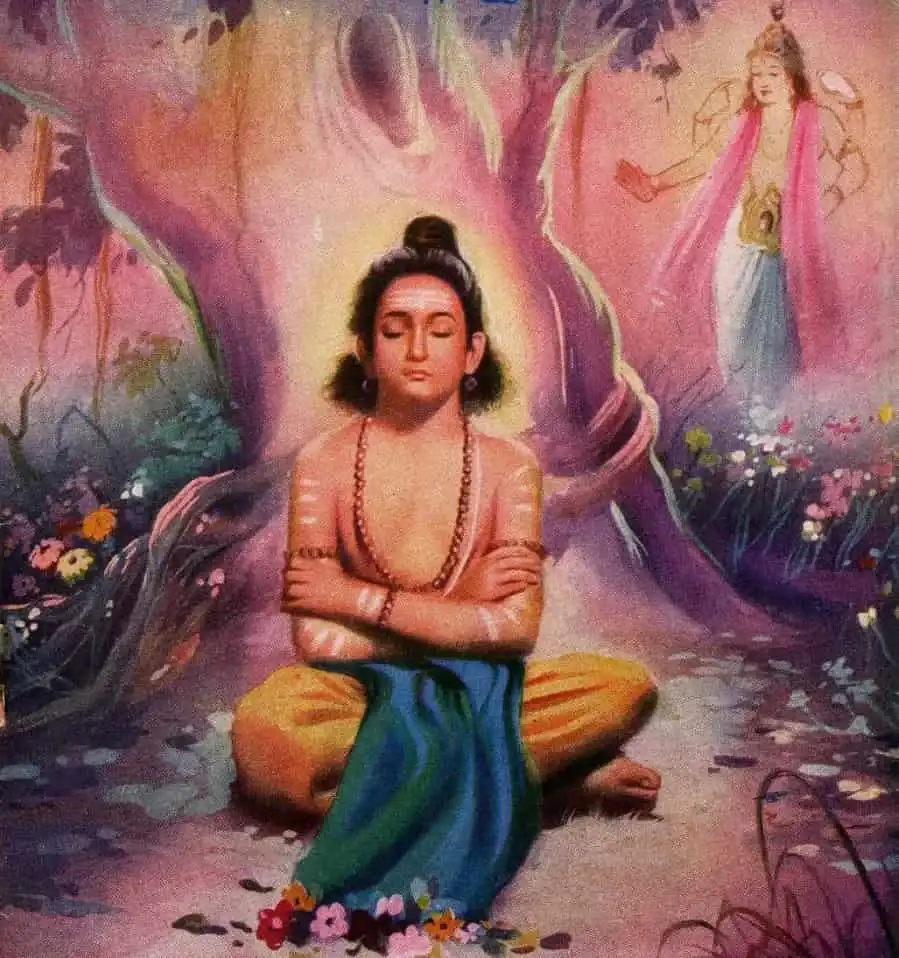
Through relentless practice, one will be able to install the deity who appears on the external platform as a Vigraha into his heart. After the deity becomes a part of your heart, even with closed eyes, one will be able to see his/her Ishta devata.
Throughout one’s life, one will experience constant association with the Supreme Lord. But, the practice must be genuinely carried out irrespective of the time (days, months, years) taken to achieve this result. One must consciously attempt to recollect the Lord’s divine pastimes and form and by deliberating thus, Bhagawan seats Himself eternally in the practitioner’s heart.
The sign of Dhyana Siddhi or ‘perfecting meditation’ is absorption in the Lord, without exercising conscious efforts. Dhyana becomes an intrinsic part of life.
Test your Alignment with the Spiritual Subject Matter (only 7-8 Questions)
The scores generated in this Quiz are relative. There are no right or wrong answers. A percentage towards 100 indicates that you are more aligned to the overall subject matter.
Dhyana and Personality Changes
The greatest benefits of this meditation is that:
- Tamas (or mode of ignorance) and Rajas (or mode of passion) flush out from the system and Sattva Guna dawns (the mode of goodness).
- Bhakti takes the next leap.
- Comrehending scriptures becomes easy.
This suggests that one must contemplate the form of the Lord (Chintan) to understand the scriptures. Contemplation is important as it cleans the heart and mind. Due to materialism, ignorance clouds in our minds and hearts. But, on adopting the above-mentioned practices all material contamination wash away and the mind-heart develops unique abilities to decode the complex teachings of Vedic scriptures.
This is the greatest advantage of form-meditation as it opens the gateways to spiritual knowledge.
The method of form-meditation is the fastest and simplest way to attain the Supreme Lord unlike the strenuous path of Ashtanga yoga which includes Yama, Niyama, Asana, Pranayama, Pratyahara, Dharana, Dhyana, and Samadhi. The latter are strict practices and are quite difficult for the common man to apply in their day-to-day lives. But, form-meditation, in Kali Yuga and is applicable for any kind of lifestyle.
It can be done while sitting in your office chair, veranda, or in the garden.
Mantra Meditation-Sadhana in Vedic Schools
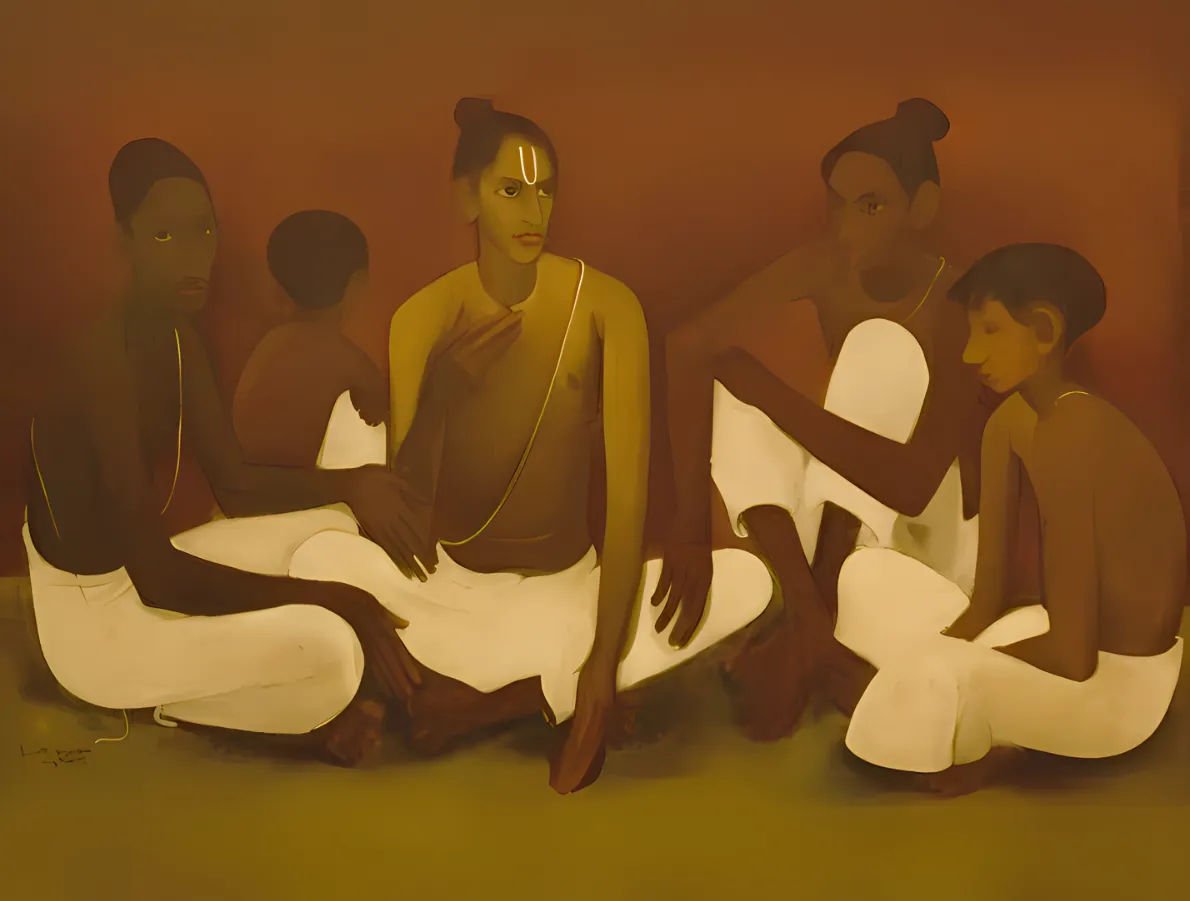
Vedic schools adopt Mantra sadhana which is very similar to the name of the Lord. The name and form of the Lord are non-different and they are equally potent.
In the initial days, students struggle to alter their pitch and stumble with their pronunciation. The Acharyas (teachers) prescribe the Gayatri Mantra and stop all other Vedic recitation for students encountering these problems.
They instruct students to recite Gayatri Mantra 3 times a day, samithdanam, and additionally recite Gayatri a thousand times, at least once a week. This altered schedule carries on for 6 months.
Many times it sets fear of losing out. Students feel that they will be left behind and their classmates will continue marching ahead. But, astonishingly they end up becoming better at grasping Vedic shlokas compared to those who didn’t practice Gayatri a sufficient number of times. The potency of the mantra is such that it dissolves all mental blocks and allows knowledge to flow.
Relevance of this Meditation Technique
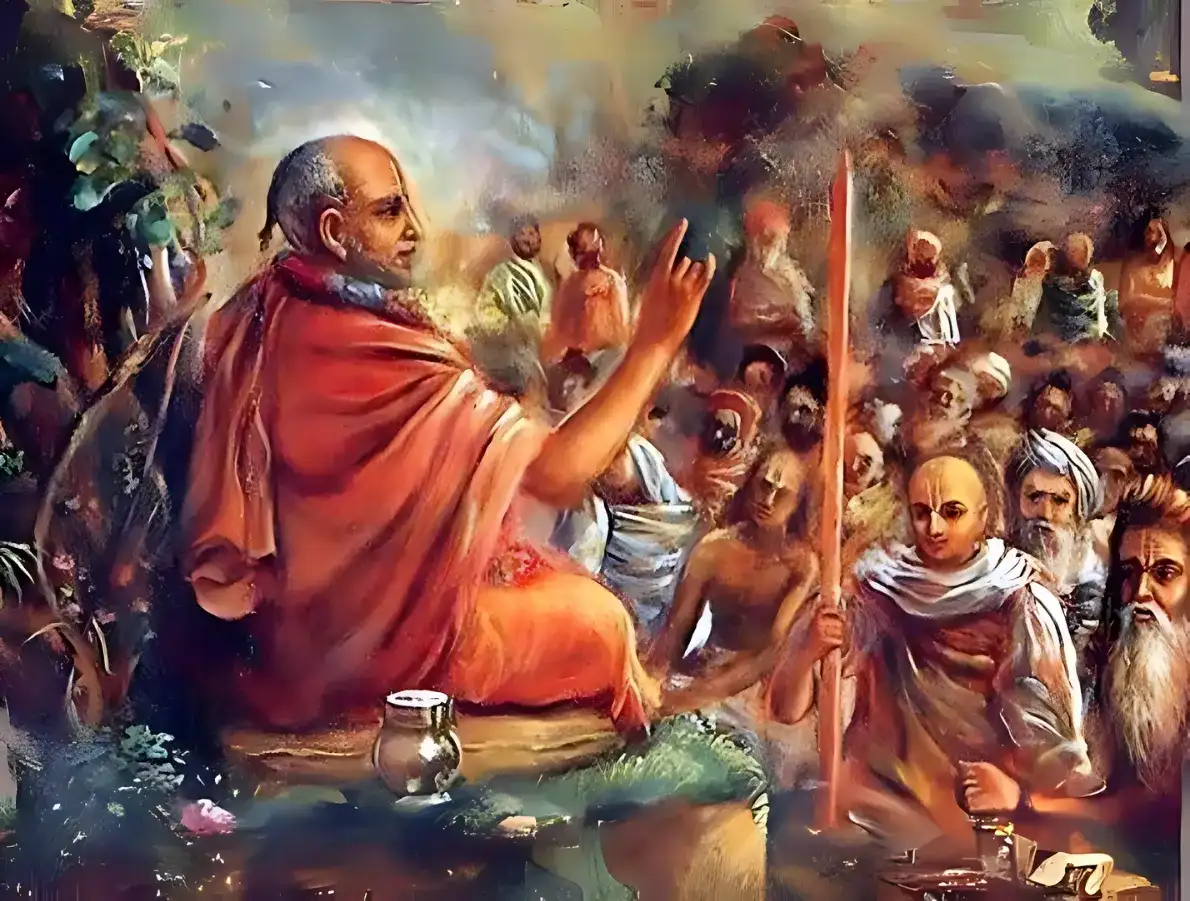
Before practicing any spiritual practice, the practitioner must consult a bonafide master. Not all practices prescribed by random spiritual preachers are relevant as their credibility can be questionable.
Hence, we must only continue spiritual practices prescribed by an authorized guru and not by anyone who merely claims to be realized.
The shastra reveals that a true guru is devoid of materialism. Here, in Naimisharanya Suta Goswami describes the virtues of Sukadeva : “Since childhood, Sukadeva was disinterested in worldly affairs as he was established in Bhagavat-Dhyana (contemplation of Bhagawan).”
Therefore, Sukadeva is an ideal guru and his teachings are direct representations of Bhagawan. Following, the dhyana sadhana mentioned in the Bhagavatham is a sure shot way to progress spiritually. It is authorized considering the status of Sukadevacharya as well as the esteemed position of the scripture, Bhagavatham.
Please Like the Blog and Share it for Maximum Reach




